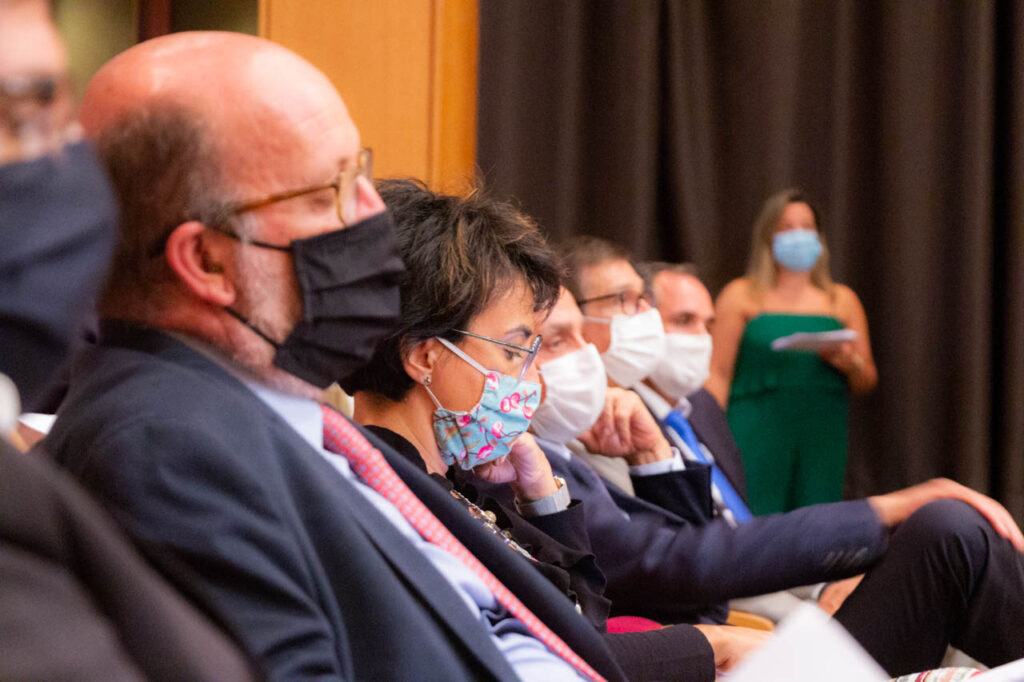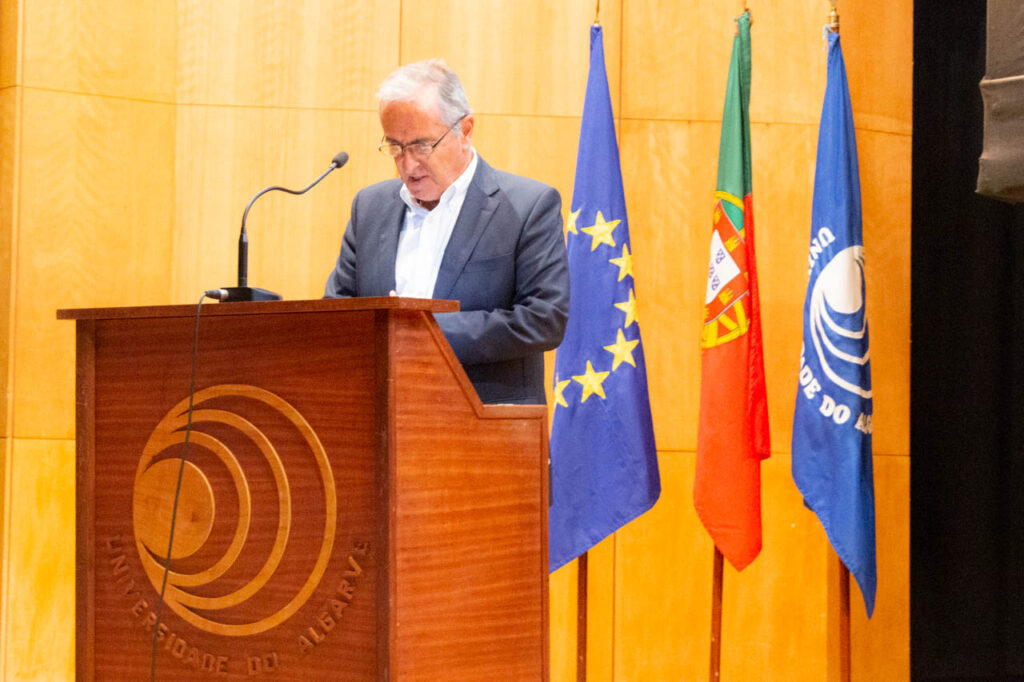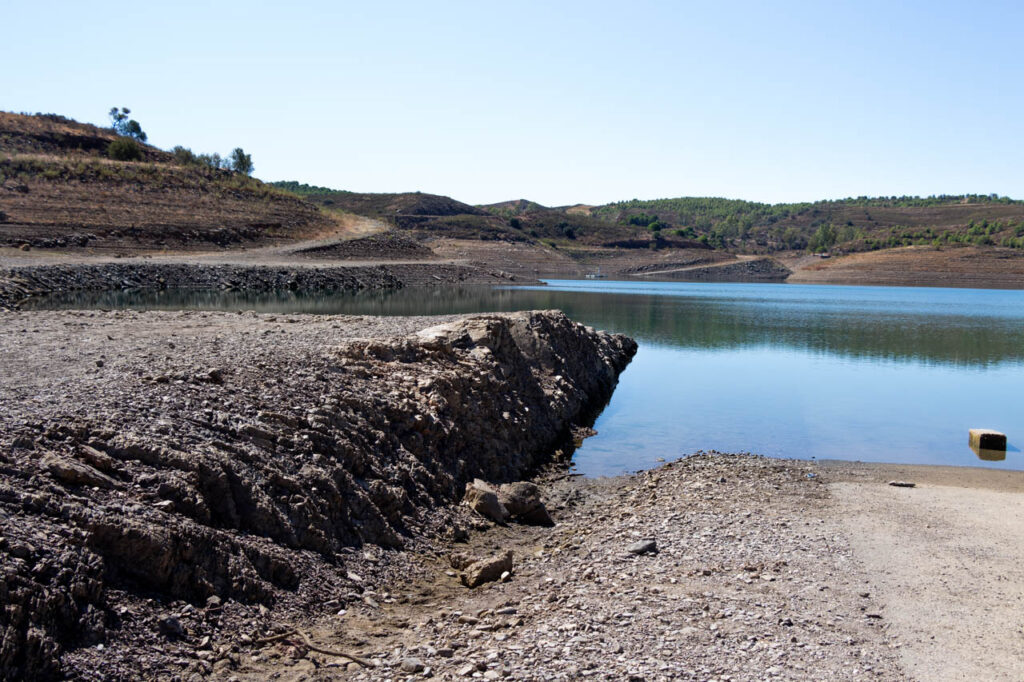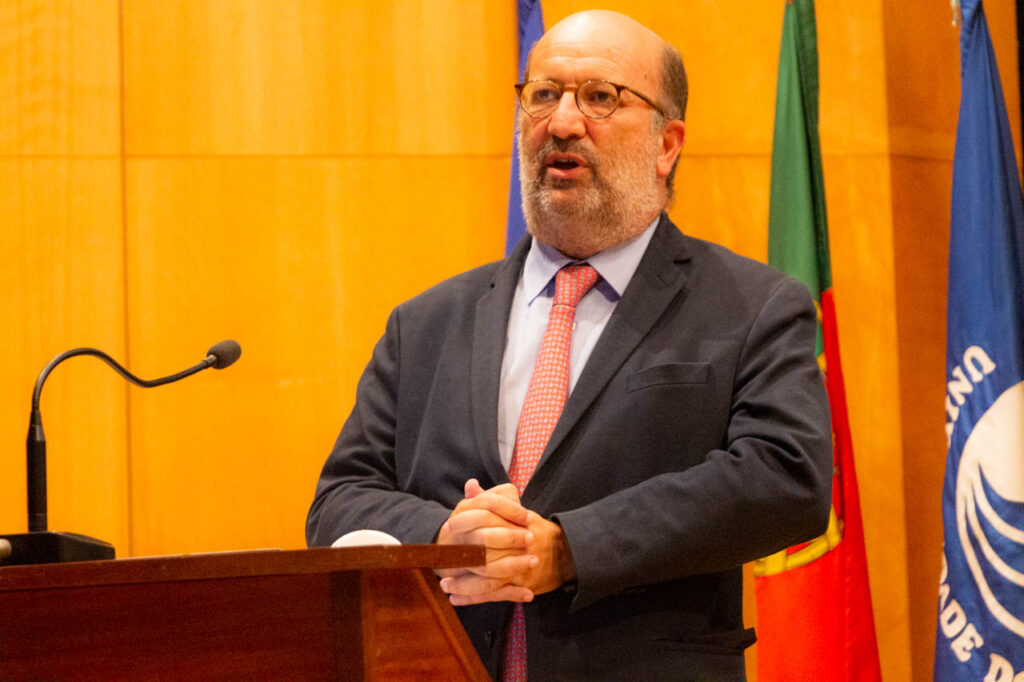The construction of a dam on the Foupana stream, desalination, a network for the reuse of wastewater and the connection of the Guadiana to the Odeleite Dam, from Pomarão, are the major infrastructures that could be built under the Plan Regional Water Efficiency (PREH) of the Algarve, which was presented yesterday in Faro. As for the dam that the mayors wanted to see built on the Monchique river, «forget it», warn the specialists.
These are the main conclusions of a study carried out by experts Carmona Rodrigues, Pedro Serra and Rodrigo Oliveira on the various solutions to increase the water reserve in the Algarve foreseen in the plan presented yesterday.
And it was clear, from the exhibition made by Pedro Serra, that the solutions that have more legs to walk are the connection between Pomarão and Odeleite, to bring water from the Guadiana to the Algarve's Intermunicipal Water Supply System, the construction of «a or two» desalination plants and the massive reuse of wastewater.
Of these, the easiest solution to put into practice is the reuse of water treated by the WWTP in the region, taking into account that the latest generation treatment plants of Companheira (Portimão) and of Faro/Olhão
The idea is to use the treated wastewater for irrigation of golf courses, some type of agricultural crops and for urban uses, such as cleaning streets or watering public gardens.
And there is even a line of financial support to carry out the necessary adaptation works, in order to allow the use of treated water, guaranteed João Matos Fernandes, the minister of the Environment, at the PREH presentation session, which took place in the Grand Auditorium. from the University of Algarve's Campus das Gambelas, and which was also attended by Maria do Céu Antunes, Minister of Agriculture.

Of all the medium/long term solutions presented, this was, the rest, the only one that the minister did not hesitate to adopt, bearing in mind that it contributes to what he considers to be the main remedy for water shortages in the Algarve: «save, save , to save”, a premise that, he considered, applies “in the immediate, but also in the short, medium and long term”.
With the use of treated wastewater and a strong commitment to improving the efficiency and sustainability of water supply systems and irrigation perimeter infrastructures at a regional level, an annual saving of 30 cubic hectometers (hm3) is expected, which is the same as saying 30 million cubic meters of this essential good, since a cubic hectometer is equivalent to one million cubic meters.
At the same time, there is the prospect of increasing water availability by 60 hm3, with the infrastructure provided for in the plan.
This is because, noted Pedro Serra, the Algarve is already facing «some situations of water stress, which will become more evident as demand increases and climate change makes itself felt».
Currently, «the Bravura dam is already being overexploited and the same will happen with the region's aquifers». However, there is still a positive balance of supply and demand of 30 hm3 – in normal years, of course, not in a year of drought like the one we are facing, a situation considered “very worrying” by the different participants in yesterday's session.
Anticipating the 2050 scenario, within 30 years, water availability will decrease substantially, due to a decrease in precipitation, which will reduce the water available both on the surface and underground. At that time, there will be a negative balance in the order of 58 hm3.
This is where new infrastructure comes in, to ensure there is enough water for the Algarve's needs for decades to come.
Of the investments recommended in the plan, and taking into account the SWOT analysis (Strong, Weaknesses, Opportunities and Threats) carried out by the authors of the study to increase the Algarve's water reserve, the most reliable solution is actually desalination, since «sea water will never be lacking».
A desalination plant will be able to work every day, 365 days a year, and, according to estimates presented by Pedro Serra, have a monthly flow of 4 hm3, which would represent «about 50 cubic hectometers in a year».
Very interesting numbers, taking into account the objective of increasing the Algarve's annual reserves by 60 hm3.

In the field of weaknesses, there is, from the outset, the high cost of the equipment, not only what is needed to build it, estimated at 85 million euros, but also energy, as this is a technology that requires a lot of electricity.
The money needed to build the desalination plant becomes an even bigger problem, taking into account that, according to the Environment Minister, there should be no funds in the next Community Support Framework to support this type of infrastructure.
In other words, Portugal would have to bear the cost of the work alone, although there is, according to the authors of the study, the possibility of granting concessions for the construction and operation of the plant to private parties.
On the other hand, the desalination process “produces a brine”. However, this problem “has a solution”.
“In Barcelona, this by-product is used in the disinfection of wastewater in WWTP. In other places it is used for salt production, in salt flats», revealed Pedro Serra.
The collection of water from Pomarão, to bring it to Odeleite, could also have a positive impact on increasing water availability in the Algarve region.
In the current scenario, «it will be possible to add something like 30 to 40 hm3 per year to the system», bringing water at the entrance of the international section of the Guadiana, in Pomarão, to the Odeleite dam.
However, everything indicates that the scenario will not continue, taking into account that the Alqueva irrigation perimeter is still "in rapid expansion" and our Spanish neighbors "will want more water in Bocachança", which means that "flows that now reach Pomarão have a tendency to decrease».
«In very dry years it will not be possible to bring water from Pomarão to Odeleite», warned Pedro Serra.

As for the analysis of the advantages and disadvantages of this work, the team of specialists says that the strengths are the fact that this solution can compensate for the excess capacity existing in the Odeleite-Beliche system, which, due to the low rainfall, is often far from the its full capacity.
In the field of weaknesses is the fact that this solution “operates only three months a year, when there is flow in the Guadiana, and depends on the year's hydraulicity”, that is, there may not be enough water to allow the transfer, for technical reasons.
Another solution that is taken into account in the Algarve's Regional Water Efficiency Plan – and which the team comprising Carmona Rodrigues, Pedro Serra and Rodrigo Oliveira studied – was the construction of dams on different streams of the Algarve.
An eventual dam on the Foupana river could, according to the study, have a storage capacity of around 40 hm3. In this case, the reservoir would support the Odeleite Dam, to which it would be connected through an adductor.
This dam «could be complementary to the intake in Pomarão» and is one of the solutions that will be studied in greater depth by the same specialists.
The dam on the Monchique stream, “forget it”, warned Pedro Serra, recalling that, in the past, a first project for the Odelouca Dam, which provided for the use of water from this stream, was failed at European level, due to the environmental impact that it would have.
On the other hand, the possibility of building the Monte da Ribeira dam, on the Alportel stream, a small reservoir with a capacity to store 10 hm3, is “to be studied”.
Despite being included in the plan and it is certain that they will be the target of feasibility studies, the dams seem to be a remote possibility, taking into account the speech of the Minister of Environment.
Because, despite guaranteeing that he would look at all the solutions without prejudice, João Matos Fernandes vehemently and repeatedly warned that surface water storage, in a region like the Algarve, is not an option that he likes.
"Let's not play the gods, thinking we can store water like screws or products in a pantry," he said, adding that "it's not worth multiplying dams when there's no water."
It is that, he argued, «wasting water is not letting it run to the sea», but rather misusing it and losing it in inefficient networks.
“There are things we cannot forget. Water is not just ours, there are other species that need it. The ecological flow is the minimum necessary, and a little more», recalled Matos Fernandes.
In other words, by retaining water from the Foupana or the Alportel stream, we may be jeopardizing an entire ecosystem, without any certainty that there will be gains in increasing water availability.
Maria do Céu Antunes pointed out that the Algarve faces the «double challenge» of «guaranteeing efficiency in the supply of water and encouraging efficiency in demand».
“Irrigation, to continue to progress, will have to improve its performance in water use. Agriculture and the environment have to go step by step», said the Minister of Agriculture.
Help us to do the Sul Informação!
Contribute your donation so that we can continue to make your journal!
Click here to support us (Paypal)
Or use our IBAN PT50 0018 0003 38929600020 44



















Comments